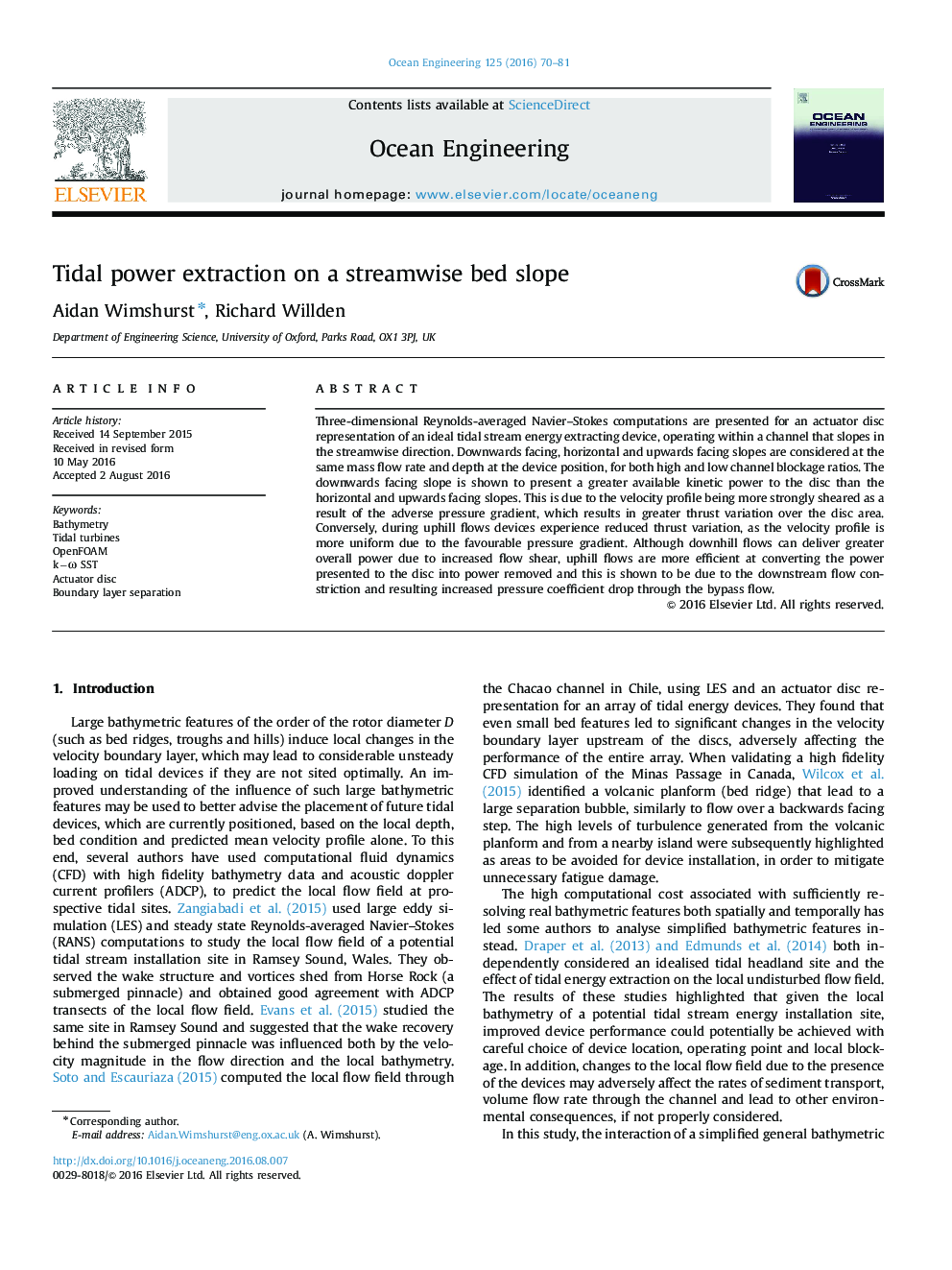| Article ID | Journal | Published Year | Pages | File Type |
|---|---|---|---|---|
| 8063906 | Ocean Engineering | 2016 | 12 Pages |
Abstract
Three-dimensional Reynolds-averaged Navier-Stokes computations are presented for an actuator disc representation of an ideal tidal stream energy extracting device, operating within a channel that slopes in the streamwise direction. Downwards facing, horizontal and upwards facing slopes are considered at the same mass flow rate and depth at the device position, for both high and low channel blockage ratios. The downwards facing slope is shown to present a greater available kinetic power to the disc than the horizontal and upwards facing slopes. This is due to the velocity profile being more strongly sheared as a result of the adverse pressure gradient, which results in greater thrust variation over the disc area. Conversely, during uphill flows devices experience reduced thrust variation, as the velocity profile is more uniform due to the favourable pressure gradient. Although downhill flows can deliver greater overall power due to increased flow shear, uphill flows are more efficient at converting the power presented to the disc into power removed and this is shown to be due to the downstream flow constriction and resulting increased pressure coefficient drop through the bypass flow.
Related Topics
Physical Sciences and Engineering
Engineering
Ocean Engineering
Authors
Aidan Wimshurst, Richard Willden,
